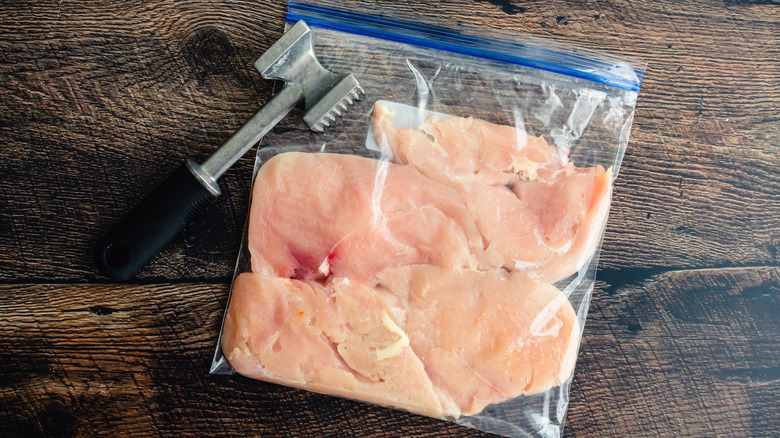The Rule You Need To Know Before Using Canned Food To Tenderize Meat
Mallets allow chefs to soften tough cuts of meat for a tender, delectable result. However, you may find yourself with a particularly tough cut of meat and no such tenderizer in sight. In this case, you can use canned foods as substitutes for mallets, provided you take the proper precautions. When cooking, it is crucial to avoid potentially dangerous food safety mistakes, especially when working with meat.
Before pounding away, cover the canned item in plastic wrap or place it inside a sealable plastic bag; this protective layer will prevent the transfer of germs. Keep in mind that cans of food can easily pick up bacteria and other illness-causing agents as they make their way from their point of origin to your kitchen pantry. That's precisely why it's a good idea to rinse soda cans before sipping, as germs on the exterior of the can could make their way inside once it's opened. Covering makeshift meat tenderizers in plastic can also protect the contents of the can from potential contaminants.
Raw meat can pose major food safety risks
Prior to cooking, raw meat can harbor some nasty germs. For instance, salmonella is a major concern with raw poultry like chicken. These bacteria are associated with significant gastrointestinal distress, and may even cause severe health effects in some individuals. Other types of raw meat also contain salmonella, as well as E. coli bacteria, which are linked to similar digestive issues. Keep in mind that food poisoning can cause very unpleasant effects, even when the illness is not serious.
When using canned food to pound raw meat, bacteria and other germs on the meat are likely to transfer to the can. When the can is eventually opened, germs on the outside may contaminate its contents. Bacteria-laden canned food can also increase the risk of cross-contamination in the kitchen. By safeguarding the canned item with plastic, you can keep the germs associated with raw meat at bay while simultaneously protecting the meat from any contaminants lingering on the can itself.

